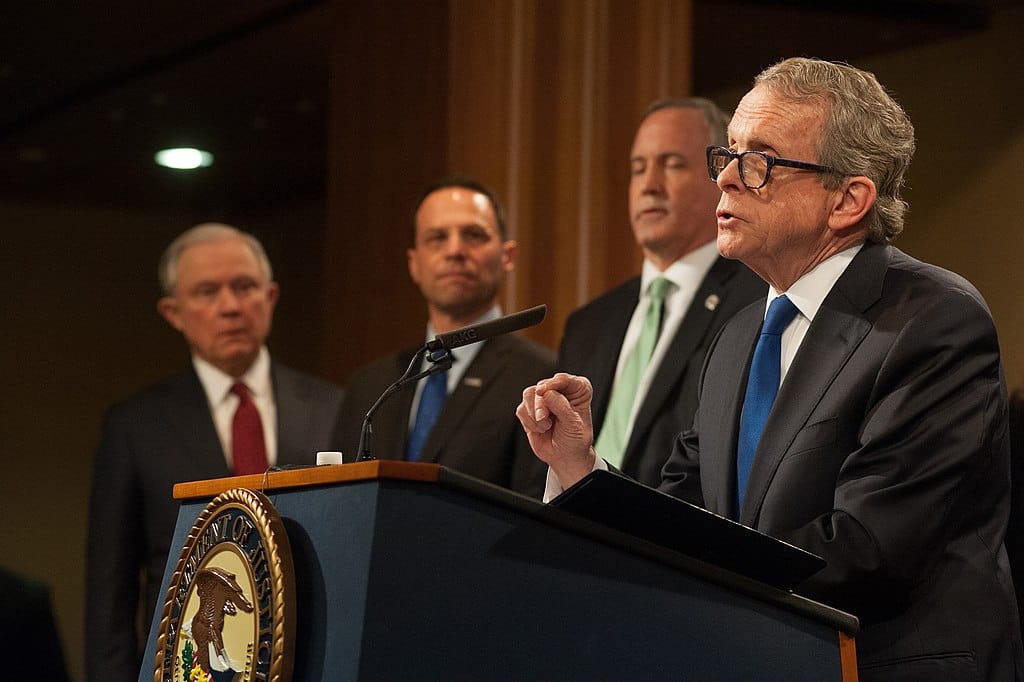Collaborative Smart City Pilots Show Promise in Improving Internet Access
May 21, 2020 — The implementation of smart technologies may be a key in solving economic challenges at the regional level, said panelists in a BroadbandUSA webinar Wednesday. The webinar focused on how smart city initiatives could improve sustainability and quality of life, including broadband acces
Em McPhie

May 21, 2020 — The implementation of smart technologies may be a key in solving economic challenges at the regional level, said panelists in a BroadbandUSA webinar Wednesday.
The webinar focused on how smart city initiatives could improve sustainability and quality of life, including broadband access, featuring panelists from the Global City Teams Challenge Smart Regions Collaborative, such as Dominic Papa, vice president of the Smart States Initiative for the Arizona Commerce Authority.
“With the rise of COVID, one of the first big challenges that we saw was the inequality of remote education, and students not having the broadband connectivity at home to really download and complete their homework assignments,” Papa said. “Add on the fact that places like Starbucks and our libraries were closed due to the pandemic, it makes it extremely difficult for these students to keep up.”
“We actually saw kids sitting with their backs against the wall of the library, trying to access the internet from the outside in,” he added.
In response, the region formed a partnership with Cisco and announced a new initiative to expand Wi-Fi internet access at state libraries. The proposed solution is being tested at five libraries, Papa said, with the goal of improving the technology and then commercializing and scaling to libraries across the state.
This process of going from pilot to scale has proven difficult in the past, with Papa calling it “the main challenge that we’d really hit on in our region” and citing limited funding and staff as major roadblocks.
The model that has ultimately proven most successful in scaling, he added, is that of bringing several separate jurisdictions together in a consortium comprised of industry leaders, university researchers and greater Phoenix communities.
The consortium collaboratively designs and develops new innovative technology pilots to ensure that all communities in the region have the necessary tools to prosper in the digital age, Papa said.
Bringing technology to the urban environment can have both positive and negative outcomes, said Jonathan Fink, Director of the Digital City Testbed Center, Portland State University.
“We can make resources more accessible and get better health outcomes, which is something we’re focused on quite a bit right now around the world, reduce carbon emissions and so on,” he said. “But the negative aspects of bringing technology into cities are that there are privacy issues, there are questions about monopolization — who owns the data, how equitable is the access to the new services that can be provided?”
In order to evaluate these competing concerns and plan for successful smart city integrations, Fink presented three questions.
First, among all of the options available, how do cities evaluate which technologies are best for their urban environment? Second, how can the general public be involved in asking that same question?
Finally, how does the private sector foster collaboration and align the various components of smart city technology with each other in order to meet the needs of both the cities and the public?
All three of these groups — cities, the general public and the private sector — rely on careful testing and cooperation, Fink said.
Smart region technologies include possibilities for improved mobility, sustainability, education, cybersecurity, agriculture and more, said Mark Fisher, President and CEO of the Council of the Great Lakes Region.
The Great Lakes Region contains a third of the combined workforce of U.S. and Canada, Fisher said. If it were a country, it would have the third largest economy in the world. The scope of the binational region makes the process of demonstrating and scaling smart solutions all the more important.
“A key to this project’s success is being able to leverage and connect to the many strengths and assets that these partners have and really trying to work on these problems in a collective collaborative way,” Fisher said.
The region’s initial pilot project was undertaken was in Defiance, Ohio, which Fisher noted was an ideal location because Gov. Mike DeWine has made goals such as state-wide broadband a top priority.
According to Fisher, the next steps for the region involve vision development, funding procurement and the launch of a webinar series to share best practices.
The region will also attempt to promote and scale the Defiance pilot project by inviting new collaborators and funders to support it.









Member discussion